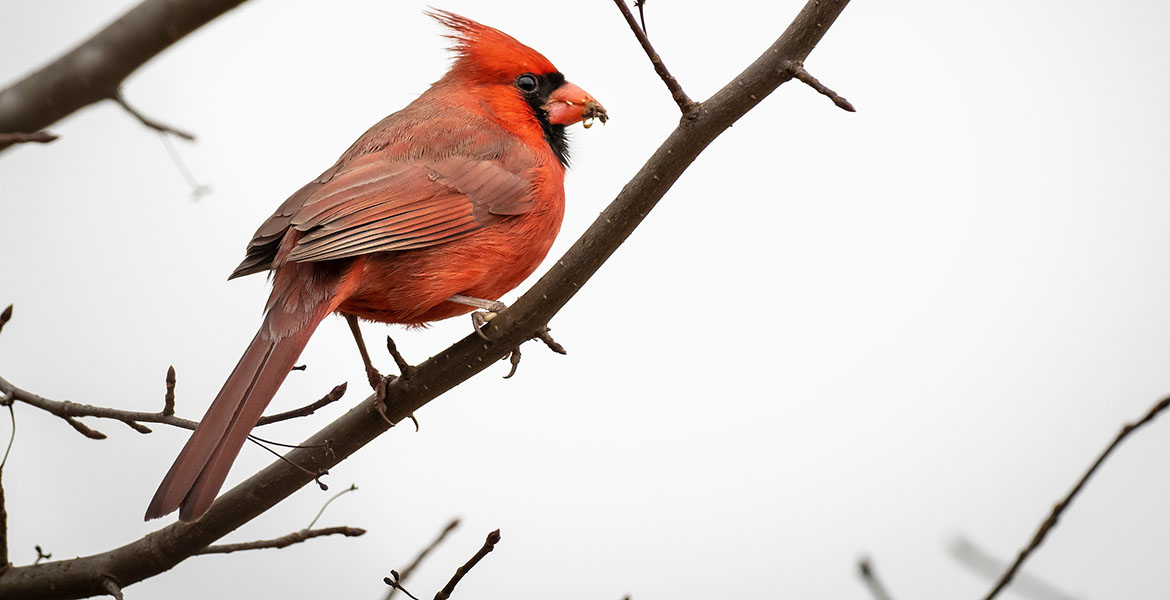
Yard work for the birds? Procrastination has its benefits
Friday, December 4, 2020
Gardeners who have been slacking on their landscaping chores lately have a loophole. No time to rake the leaves or clear out the flower beds? No problem.
The landscape can go to the birds – literally – in the fall. David Hillock, Oklahoma State University Extension consumer horticulturist, said wild birds are grateful for the lack of upkeep.
“This is the time of year when tidy gardeners are raking leaves, removing dead plants from flowerbeds and doing a general cleanup,” Hillock said. “However, seed heads of coneflower, black-eyed Susan and other native wildflowers provide a smorgasbord for birds. In addition, native species of grasses make good forage after they go to seed. Letting other dead plants stick around can provide protein-packed snacks for birds in the form of insect larvae.”
Gardeners can save themselves some sore muscles by letting leaves lie instead of raking. Fallen leaves are important because they rot and enrich the soil. They also provide a place for bugs to gather and birds to forage.
For those who simply can’t take a complete hands-off approach, consider composting only some of the leaves while leaving the remainder scattered across the landscape. Hillock said other options include raking leaves into flower beds or mulching them to nourish the lawn. Fallen leaves also provide a habitat for lots of little critters such as salamanders, snails, worms and toads.
“The epic ice storm in October broke many tree limbs in the landscape. While large limbs do need to be taken care of, consider building a small brush pile that will shelter birds from bad weather and predators,” he said. “This brush pile also can serve as a home to rabbits and other small wildlife. These critters can be fun to watch through the window.”
While gardening enthusiasts take advantage of the break, they should consider visiting local nurseries for native shrubs and trees. Fall and early winter weather is more comfortable to work in than the blistering summer heat.
“When at the nursery, consider native dogwood, hawthorn, sumac and other flowering shrubs as additions to the landscape,” Hillock said. “They produce small fruits that not only feed the bird population during the cold months, but also provide a wonderful pop of color in the winter landscape.”
OSU Extension offers additional information regarding landscaping and gardening to attract birds on its website.
MEDIA CONTACT: Trisha Gedon | Agricultural Communications Services | 405-744-3625 | trisha.gedon@okstate.edu
